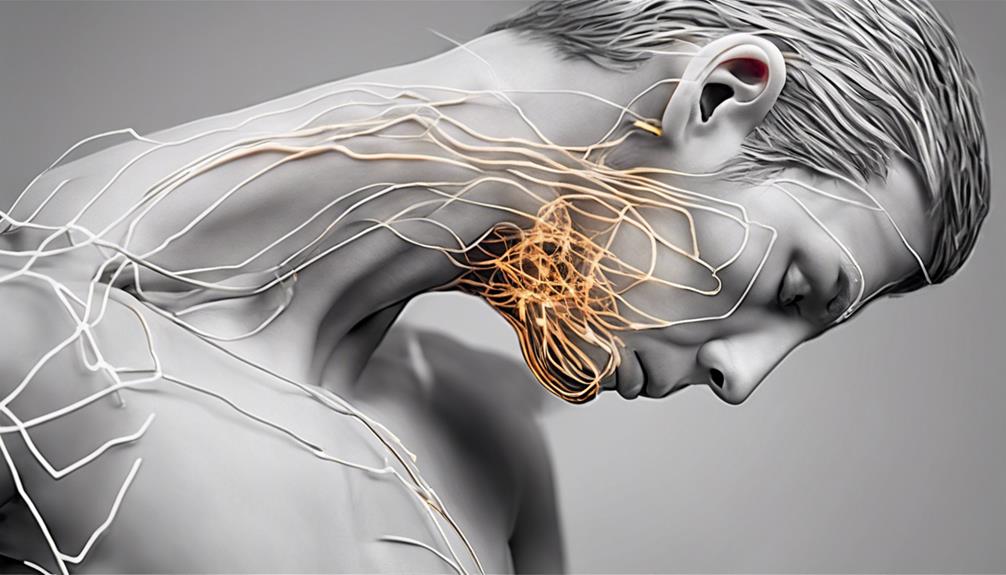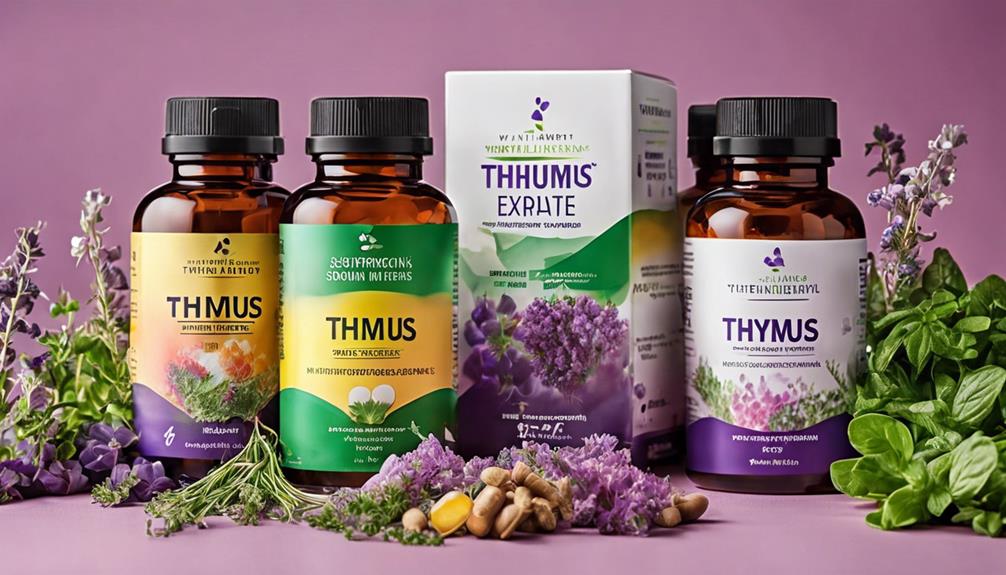In exploring the topic of the 5 latest treatments for sleep apnea, let’s delve into cutting-edge approaches to managing this sleep disorder. Upper Airway Stimulation Therapy involves implanting a device in the chest to gently stimulate and keep the airway open, thereby reducing apnea events significantly. Oral Negative Pressure Therapy creates negative pressure in the mouth to support the upper airway, providing a non-invasive alternative to CPAP. Nasal Expiratory Positive Airway Pressure Devices apply pressure during exhalation to maintain airway openness and improve sleep quality. Hypoglossal Nerve Stimulation activates throat muscles to prevent airway collapse, demonstrating encouraging outcomes. Myofunctional Therapy strengthens key muscles to effectively address airway obstructions. For more detailed insights, continue exploring.
Key Takeaways
- Upper Airway Stimulation Therapy reduces apnea events with a small chest implant.
- Oral Negative Pressure Therapy stabilizes airway with oral cavity pressure.
- Nasal Expiratory Positive Airway Pressure Devices improve sleep quality non-invasively.
- Hypoglossal Nerve Stimulation prevents airway collapse with minimal implantation.
- Myofunctional Therapy strengthens muscles for reduced apnea events holistically.
Upper Airway Stimulation Therapy
We implant a small device under the skin in the upper chest to deliver mild stimulation, keeping the upper airway open during sleep for improved quality. This upper airway stimulation therapy is a safe and effective option for individuals with obstructive sleep apnea who are intolerant to CPAP.
By activating the device with a remote control, the therapy helps reduce the apnea-hypopnea index noticeably, from 29 to 9 events per hour after 12 months of consistent use. The procedure for implanting the device is typically done on an outpatient basis, making it convenient for patients.
With specific criteria such as age, BMI, and AHI range, candidates can benefit from this therapy, especially if CPAP hasn't been successful for them. Compared to CPAP, this therapy has shown higher compliance rates, low complication rates, and improved overall sleep quality.
It's important for individuals considering this therapy to consult with their healthcare providers to determine if they're suitable candidates for upper airway stimulation therapy.
Oral Negative Pressure Therapy
Oral negative pressure therapy, a novel approach in treating sleep apnea, involves utilizing a device to create negative pressure in the oral cavity during sleep. This therapy aims to stabilize the upper airway, reducing episodes of obstructive events that occur during sleep. Research has shown that oral negative pressure therapy can lead to a significant decrease in the apnea-hypopnea index (AHI) in individuals with obstructive sleep apnea.
Being a non-invasive alternative option, it may be suitable for those who struggle with or can't adhere to traditional CPAP therapy. The efficacy of oral negative pressure therapy in managing sleep apnea is being actively studied, showing promising results. This treatment provides a potential solution for individuals seeking a different approach to address their sleep apnea symptoms.
As ongoing research continues to explore its benefits, oral negative pressure therapy stands out as a valuable addition to the options available for those dealing with sleep apnea.
Nasal Expiratory Positive Airway Pressure Devices
Nasal expiratory positive airway pressure devices offer a new and effective treatment option for individuals with sleep apnea. These devices are non-invasive and work by applying pressure during exhalation to keep the airway open, aiding in managing obstructive sleep apnea. They can serve as an alternative to traditional CPAP therapy, aiming to improve sleep quality and reduce the apnea-hypopnea index. Research has shown promising results in using nasal expiratory positive airway pressure devices to enhance sleep apnea management.
| Key Points | Details |
|---|---|
| Treatment Type | Nasal Expiratory Positive Airway Pressure Devices |
| Invasiveness | Non-Invasive |
| Mechanism | Keeps Airway Open during Exhalation |
| Condition Targeted | Obstructive Sleep Apnea |
| Impact | Improves Sleep Quality, Reduces Apnea-Hypopnea Index |
These devices offer a practical and promising approach to addressing sleep apnea, providing individuals with an effective tool to enhance their sleep quality and overall well-being.
Hypoglossal Nerve Stimulation

Utilizing hypoglossal nerve stimulation presents a cutting-edge approach to managing obstructive sleep apnea by implanting a device that stimulates throat muscles and the tongue to keep the airway open during sleep. This treatment option is ideal for individuals who haven't responded well to traditional therapies like CPAP or oral appliances. It's usually considered when other methods haven't been effective in keeping the upper airway open during sleep, thereby improving breathing patterns.
Hypoglossal nerve stimulation works by activating the hypoglossal nerve, which controls the movement of the tongue and other throat muscles, preventing airway collapse and promoting uninterrupted breathing throughout the night. The implantation of the device is minimally invasive, and studies have shown promising results in reducing the frequency of apnea events and enhancing overall sleep quality.
If you have struggled with obstructive sleep apnea and traditional treatments haven't provided the desired relief, discussing hypoglossal nerve stimulation with your healthcare provider could be a valuable next step in managing your condition effectively.
Myofunctional Therapy
Exploring tongue and facial muscle strength and coordination through myofunctional therapy offers a targeted approach to treating sleep apnea. This therapy focuses on enhancing airway function by correcting oral habits, refining breathing patterns, and optimizing overall oral posture. Studies have shown that myofunctional therapy can effectively reduce the apnea-hypopnea index (AHI) by strengthening the key muscles involved in breathing and upper airway stability, ultimately decreasing collapsibility during sleep.
To investigate further the benefits and principles of myofunctional therapy, consider the following table:
| Myofunctional Therapy Benefits | Principles of Myofunctional Therapy |
|---|---|
| – Improves tongue muscle strength | – Corrects oral habits |
| – Enhances facial muscle coordination | – Refines breathing patterns |
| – Optimizes airway function | – Enhances upper airway stability |
Myofunctional therapy serves as a non-invasive treatment option that targets the root causes of airway obstruction in individuals with sleep apnea. By addressing muscle strength and coordination, this therapy offers a holistic approach to improving sleep quality and overall health.
Frequently Asked Questions
What Is the Most Successful Treatment for Sleep Apnea?
CPAP therapy stands as the most successful treatment for sleep apnea. It has been the gold standard for over 40 years, proven to reduce dementia and cognitive impairment risks linked to sleep apnea.
Long-term CPAP use also lowers heart disease and diabetes risks while improving breathing and overall sleep quality. Its effectiveness and benefits make CPAP therapy the top choice for managing sleep apnea successfully.
What Is the New Cure for Sleep Apnea?
We've discovered a cutting-edge solution for sleep apnea: the Inspire upper airway stimulation device. This FDA-approved innovation doesn't require a mask and involves implanting a device that stimulates airway muscles to stay open during sleep.
It's an excellent option for those who struggle with CPAP or oral appliances. Inspire therapy is most beneficial for individuals with a BMI under 32, offering improved sleep quality and reduced apnea events.
What Is the New Appliance for Sleep Apnea?
We've found the latest appliance for sleep apnea is the FDA-approved Inspire upper airway stimulation device. This maskless option internally stimulates airway muscles to maintain openness during sleep. It's ideal for those intolerant to CPAP, oral devices, or with a BMI under 32.
Inspire involves implantation and occasional battery replacement, providing an alternative to traditional CPAP therapy. This new treatment offers relief for individuals struggling with CPAP discomfort or non-compliance.
What Is the Permanent Solution for Sleep Apnea?
The permanent solution for sleep apnea is upper airway stimulation therapy. It involves implanting a small device under the skin to deliver mild stimulation, keeping the upper airway open during sleep.
This therapy offers consistent quality sleep, improved health, reduced daytime sleepiness, and protection of memory function. It's safe and effective for many with obstructive sleep apnea.
Candidates must meet specific criteria, including age, CPAP failure, BMI, AHI range, recent sleep study, and airway anatomy.
Conclusion
To sum up, the latest treatments for sleep apnea offer new hope and relief for those struggling with this condition. With advancements in technology and therapy options like Upper Airway Stimulation and Hypoglossal Nerve Stimulation, individuals can now find effective solutions to improve their quality of sleep and overall well-being. These innovations not only help manage sleep apnea but can also address related health concerns, such as cardiovascular issues. For example, improving sleep quality through advanced treatments can naturally support efforts to maintain healthy blood pressure levels, complementing strategies like reduce high blood pressure tips. By taking a proactive approach to managing both sleep apnea and its associated risks, individuals can enjoy a healthier and more energized life.
These treatments are like shining beacons in the night, guiding individuals towards a brighter, more restful future. It's time to take charge of your sleep health and explore these innovative options.









